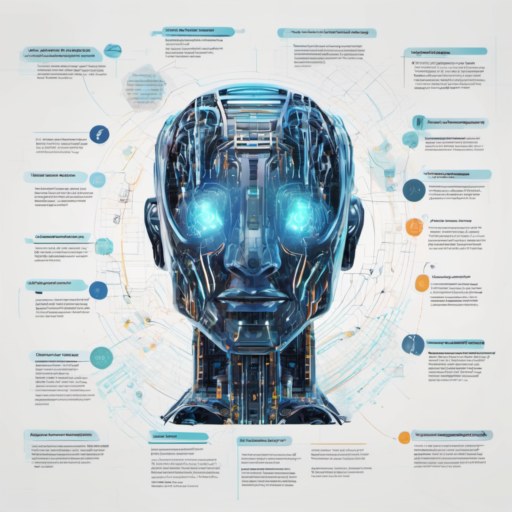Artificial Intelligence( AI) has converted from a abstract idea to a technology that influences numerous aspects of our diurnal lives. Understanding the history of AI helps us appreciate its current capabilities and implicit unborn developments.

Early onsets The Concept of Intelligent Machines
The idea of creating intelligent machines dates back to ancient myths and legends, but the formal foundation was laid in themid-20th century
- 1950 Alan Turing, a British mathematician, introduced the conception of a machine that could pretend any mortal intelligence process. He proposed the Turing Test as a measure of a machine’s capability to parade intelligent geste indistinguishable from a mortal.
- 1956 The term” Artificial Intelligence” was chased during the Dartmouth Conference, organized by John McCarthy, Marvin Minsky, Nathaniel Rochester, and Claude Shannon. This event is considered the birth of AI as an academic discipline.
The Early Days Rule- Grounded Systems and Emblematic AI
- 1960s- 1970s AI exploration concentrated on emblematic AI, also known as GOFAI( Good Old- Fashioned AI). Researchers developed rule- grounded systems that decoded mortal knowledge into computer programs. Notable systems include the General Problem Solver( GPS) by Newell and Simon and ELIZA, an early natural language processing program by Joseph Weizenbaum.
The AI Winters Ages of Reduced Backing and Interest
AI exploration has faced several ages of reduced backing and interest, known as” AI layoffs,” due to unmet prospects and specialized limitations 1970s The first AI downtime passed as experimenters encountered difficulties in scaling rule- grounded systems and emblematic AI to handle real- world complexity and nebulosity.
- 1980s Despite original excitement, expert systems, which used rule- grounded approaches for specific disciplines, failed to deliver practical results, leading to another AI downtime.
The Rise of Machine Learning Data- Driven Approaches
- 1990s AI began to shift towards machine literacy, a subfield concentrated on developing algorithms that enable computers to learn from data. Notable mileposts include the development of decision trees, neural networks, and support vector machines.
- 1997 IBM’s Deep Blue defeated world chess champion Garry Kasparov, demonstrating the eventuality of AI in strategic games.
The Big Data Era Deep Learning and improvements
- 2000s- Present The arrival of big data and increased computational power led to the rejuvenescence of neural networks and the rise of deep literacy. improvements in image and speech recognition, natural language processing, and game playing marked this period.
- 2012 AlexNet, a deep convolutional neural network, won the ImageNet competition, significantly outperforming former models and sparking wide interest in deep literacy.
- 2016 Google’s DeepMind developed AlphaGo, which defeated Go champion Lee Sedol. This palm showcased the eventuality of deep underpinning literacy.
Current Trends and unborn Prospects
Today, AI continues to evolve fleetly, with ongoing exploration in areas like underpinning literacy, generative models, and resolvable AI. The integration of AI into colorful diligence, from healthcare to finance, is transubstantiating how we live and work.
As AI technology advances, it’s pivotal to address ethical considerations, including fairness, translucency, and responsibility, to insure that AI benefits society as a whole.
Blog Post What’s Generative AI? An preface
Generative AI is a fascinating subfield of artificial intelligence that focuses on creating models able of generating new, original content. Unlike traditional AI, which frequently centers on bracket and vaticination, generative AI aims to produce labors that mimic the complexity and variety of mortal- generated data.
Understanding Generative AI
At its core, generative AI involves training models to learn the patterns and structures within a dataset, enabling them to induce new, analogous data. This capability to produce rather than simply dissect sets generative AI piecemeal.
Crucial ways in Generative AI
Several crucial ways and models are foundational to generative AI
- Generative inimical Networks( GANs) Introduced by Ian Goodfellow and his associates in 2014, GANs correspond of two neural networks, a creator and a discriminator, that contend against each other. The creator creates fake data, while the discriminator evaluates its authenticity. Over time, the creator improves, producing decreasingly realistic data.
- Variational Autoencoders( VAEs) VAEs are a type of autoencoder that learns to render input data into a idle space and also crack it back to the original format. VAEs add a probabilistic subcaste, enabling them to induce new data by slice from the idle space.
- Autoregressive Models These models induce data one step at a time, conditioning each step on the former bones. Notable exemplifications include language models like GPT( GenerativePre-trained Transformer) developed by OpenAI, which generates coherent and contextually applicable textbook.
Operations of Generative AI
Generative AI has a wide range of operations across colorful disciplines
- Image Generation GANs are extensively used for creating realistic images, from generating faces of missing people to enhancing image resolution and creating cultural styles.
- Text Generation Language models like GPT- 3 can write essays, induce law, and produce conversational agents. They’re used in operations ranging from chatbots to automated content creation.
- Music and Art Generative AI can compose music and produce visual art, frequently producing pieces that are indistinguishable from those made by mortal artists.
- Healthcare Generative models can help in medicine discovery by generating molecular structures with asked parcels, potentially accelerating the development of new specifics.
Challenges and unborn Directions
Despite its eventuality, generative AI also faces several challenges
- Quality Control icing the generated content is of high quality and free of vestiges remains a significant challenge.
- Ethical enterprises The capability to induce realistic content raises ethical issues, including the eventuality for abuse in creating deepfakes and synthetic media.

Looking ahead, the future of generative AI is promising, with ongoing exploration concentrated on perfecting model robustness, interpretability, and ethical use. As the field continues to advance, generative AI is poised to play an decreasingly vital part in creativity, invention, and problem- working across colorful diligence.
By understanding the foundations and operations of generative AI, we can more appreciate its eventuality to transfigure our world and address the challenges that come with this important technology.

Ved Prakash Chaubey
Unleashing Insights from Data, One Algorithm at a Time!
- “Data-Driven Success.”
- “Big Data, Big Fun, Big Wins.”
- “All Roads Lead to Big Data.”
- “From Big Data to Big Success.”
- “Data-Driven, World Proven.”
- “We Turn Big Data into Big Deals.”
- “Big Data, Bigger Possibilities.”
- “Let Your Data Tell the Story.”





